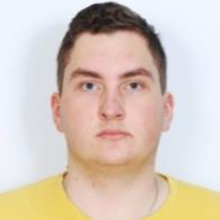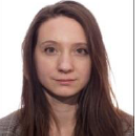International Journal of Image, Graphics and Signal Processing (IJIGSP)
IJIGSP Vol. 17, No. 4, 8 Aug. 2025
Cover page and Table of Contents: PDF (size: 1766KB)
Computed Tomography Image Segmentation Technology Based on ResNet Network Integrated into the Probabilistic Model
PDF (1766KB), PP.14-32
Views: 0 Downloads: 0
Author(s)
Index Terms
Image Segmentation, Deep Residual Network, Atrous Spatial Pyramid Pooling, Conditional Random Fields, GrabCut, Histogram Equalization
Abstract
Medical image segmentation is a significant and complex challenge in medical imaging. In recent years, deep learning models have been applied to image segmentation and have shown exceptional performance. However, medical image segmentation has a scarcity of expert-labeled data compared to other deep learning research fields. Therefore, augmenting medical expert-labeled data are primarily the easiest and fastest way to improve the deep learning model’s performance. In this paper, computed tomography image segmentation technology based on the ResNet network integrated into the probabilistic model has been proposed. The proposed segmentation technology is based on the deep learning model of the ResNet50 architecture to extract features from images and initially detect objects of interest and on the probabilistic model with weighted parameters that employs conditional random fields, the GrabCut algorithm, and the argmax function to perform the final detection of objects of interest.
To train, test, and evaluate the effectiveness of the proposed method, appropriate chest CT datasets were identified to solve the task of segmenting the lung cavity, the liver and areas affected by COVID-19. The proposed image segmentation technology demonstrates segmentation accuracy results of 73.12% by Dice Score for the COVID-19 disease dataset, 97.71% for the lung cavity dataset, and 98.36% for the liver dataset, which perform better than state-of-the-art solutions.
The proposed image segmentation technology has been compared with state-of-the-art technologies (SegNet, UNet, and FCN-ResNet50) for CT segmentation to demonstrate the effectiveness of the method. The positive outcomes strongly suggest the significant potential of the proposed image segmentation technology. According to the obtained results, the proposed image segmentation technology can be a useful auxiliary tool for doctors to segment CT images for further analysis and monitoring of statistical and dynamic indicators.
Cite This Paper
Zhengbing Hu, Kostiantyn Zvieriev, Oksana Shkurat, Andrii Dychka, "Computed Tomography Image Segmentation Technology Based on ResNet Network Integrated into the Probabilistic Model", International Journal of Image, Graphics and Signal Processing(IJIGSP), Vol.17, No.4, pp. 14-32, 2025. DOI:10.5815/ijigsp.2025.04.02
Reference
[1]O. Ronneberger, P. Fischer, T. Brox, “UNet: Convolutional networks for biomedical image segmentation,” in Proceedings of the International Conference on Medical Image Computing and Computer-Assisted Intervention, Munich, Germany, 5–9 October 2015, pp. 234–241, 2015.
[2]L.C. Chen, G. Papandreou, I. Kokkinos, K. Murphy, A.L. Yuille, “DeepLab: semantic image segmentation with deep convolutional nets, atrous convolution, and fully connected CRFs,” IEEE Transactions on Pattern Analysis and Machine Intelligence, pp. 834–848, 2018.
[3]V. Badrinarayanan, A. Handa, R. Cipolla, “SegNet: A deep convolutional encoder–decoder architecture for robust semantic pixel-wise labelling,” arXiv:1505.07293, 2015.
[4]U.F. Mohammad, M. Almekkawy, “Automated detection of liver steatosis in ultrasound images using convolutional neuralnetworks,” in Proceedings of the 2021 IEEE International Ultrasonics Symposium China, 11–16 September 2021, pp.1-4, 2021.
[5]C. Peng, X. Zhang, G. Yu, G. Luo, J. Sun, “Large kernel matters – Improve semantic segmentation by global convolutional network,” in Proceedings of the IEEE Conference on Computer Vision and Pattern Recognition, pp. 4353–4361, 2017.
[6]J. Long, E. Shelhamer, and T. Darrell, “Fully convolutional networks for semantic segmentation,” in Proceedings of the IEEE Conference on Computer Vision and Pattern Recognition, pp. 3431–3440, 2015.
[7]J. Chen, Y. Lu, Q. Yu, X. Luo, E. Adeli, Y. Wang, L. Lu, A. L. Yuille, Y. Zhou, “TransUNet: Transformers make strong encoders for medical image segmentation,” arXiv:2102.04306, 2021.
[8]H. Cao, Y. Wang, J. Chen, D. Jiang, X. Zhang, Q. Tian, M. Wang, “SwinUNet: UNet-like pure transformer for medical image segmentation,” arXiv:2105.05537, 2021.
[9]W. Chen, Y. Wang, D. Tian, Y. Yao, “CT Lung Nodule Segmentation: A Comparative Study of Data Preprocessing and Deep Learning Models,” IEEE Access, Vol.23, pp. 34925-34931, 2023.
[10]M. Heidari, S. Mirniaharikandehei, A. Z. Khuzani, G. Danala, Y. Qiu, B. Zheng, “Improving the performance of CNN to predict the likelihood of COVID-19 using chest X-ray images with preprocessing algorithms,” International Journal of Medical Informatics, Vol. 144, 2020.
[11]H. Zanddizari, N. Nguyen, B. Zeinali, J.M. Chang, “A new preprocessing approach to improve the performance of CNN-based skin lesion classification,” Medical Biological Engineering Computing, Vol. 59, pp. 1123-1131, 2021.
[12]H. Huang, L. Lin, R. Tong, H. Hu, Q. Zhang, Y. Iwamoto, X. Han, Y.W. Chen, J. Wu, “UNet 3+: A full-scale connected UNetfor medical image segmentation,” in Proceedings of the ICASSP 2020—2020 IEEE International Conference on Acoustics, Speechand Signal Processing (ICASSP), Barcelona, Spain, 4–8 May 2020, pp. 1055–1059, 2020.
[13]L.-C. Chen, Y. Zhu, G. Papandreou, F. Schroff, H. Adam, “Encoder-decoder with atrous separable convolution for semantic image segmentation,” in Proceedings of the 15th European Conference, Munich, Germany, September 8–14, 2018, pp. 801-818, 2018.
[14]Z. Xiao, M. Du, J. Liu, E. Sun, J. Zhang, X. Gong, Z. Chen, “EA-UNet based segmentation method for OCT image of uterine cavity,” Photonics, Vol. 10(1), 2023.
[15]A.H. Alwan, S.A. Ali, A.T. Hashim, “Medical image segmentation using enhanced residual U-Net architecture,” Mathematical Modelling of Engineering Problems, Vol.11, No.2, pp. 507-516, 2024.
[16]V. Jumutc, D. Bliznuks, A. Lihachev, “Multi-Path UNet architecture for cell and colony-forming unit image segmentation,” Sensors, Vol. 22, 2022.
[17]X. Chen, L. Yao, Y. Zhang, “Residual attention u-net for automated multi-class segmentation of covid-19 chest CT images,” arXiv:2004.05645, 2020.
[18]S. Tao, Y. Jiang, S. Cao, C. Wu, Z. Ma, “Attention-guided network with densely connected convolution for skin lesionsegmentation,” Sensors, Vol. 21, 2021.
[19]A. Khan, R. Garner, M.L. Rocca, S. Salehi, D. Duncan “A novel threshold-based segmentation method for quantification of COVID-19 lung abnormalitie,” Signal, Image and Video Processing, Vol.17, pp. 907-914, 2023.
[20]L. Abualigah, A. Diabat, P. Sumari, A.M. Gandomi, “A novel evolutionary arithmetic optimization algorithm for multilevel thresholding segmentation of COVID-19 CT images,” Evolutionary Process for Engineering Optimization, Vol. 9, 2021.
[21]Z. Zhou, Z. Xue-chang, Z. Si-ming, X. Hua-fei, S. Yue-ding, “Semi-automatic liver segmentation in CT images through intensity separation and region growing,” Procedia computer science, Vol. 131, pp. 220-225, 2018.
[22]A. Khorshidi, J. Soltani-Nabipour, B. Noorian, “Lung tumor segmentation using improved region growing algorithm,” Nuclear Engineering and Technology, Vol. 52, No. 10, pp. 2313-2319, 2020.
[23]O. Shkurat, Y. Sulema Y., V. Suschuk-Sliusarenko, A. Dychka, “Image Segmentation Method Based on Statistical Parameters of Homogeneous Data Set,” Advances in Intelligent Systems and Computing, Vol. 902, pp. 271–281, 2020.
[24]B. Rim, S. Lee, A. Lee, H.-W. Gil, M. Hong, “Semantic cardiac segmentation in chest CT images using K-means clustering and the mathematical morphology method,” Computer Vision and Machine Learning for Medical Imaging System, Vol. 21, 2021.
[25]J. Kong, J. Hou, M. Jiang, J. Sun, “A novel image segmentation method based on improved intuitionistic fuzzy C-means clustering algorithm,” KSII Transactions on Internet and Information Systems, Vol. 13, No.6, pp. 3121–3143, 2019.
[26]M. S. Alam, M. K. Islam, M. S. Ali, M. S. Miah, M. M. Rahman, M. A. Hossain, “Brain tumor detection in MR image using superpixels, principal component analysis and template based K-means clustering algorithm,” Machine Learning with Applications, Vol. 5, 2021.
[27]E. E. Nithila, S. S. Kumar, “Segmentation of lung nodule in CT data using active contour model and Fuzzy C-mean clustering,” Alexandria Engineering Journal, vol. 55, no. 3, pp. 2583-2588, 2016.
[28]W. Wu, S. Wu, Z. Zhou, R. Zhang and Y. Zhang, “3D liver tumor segmentation in CT images using improved fuzzy C‐means and graph cuts,” BioMed Research International, Vol. 2017, No. 1, 2017.
[29]A. Zareei, A. Karimi, “Liver segmentation with new supervised method to create initial curve for active contour,” Computers in Biology and Medicine, Vol. 75, pp. 139-150, 2016.
[30]Q. Huang, H. Ding, X. Wang, G. Wang, “Fully automatic liver segmentation in CT images using modified graph cuts and feature detection,” Computers in biology and medicine, Vol. 95, pp. 198-208, 2018.
[31]J. Wang, Y. Cheng, C. Guo, Y. Wang, S. Tamura, “Shape-intensity prior level set combining probabilistic atlas and probability map constrains for automatic liver segmentation from abdominal CT images,” International journal of computer assisted radiology and surgery, Vol. 11, pp. 817–826, 2016.
[32]B. A. Skourt, A. El Hassani, A. Majda, “Lung CT image segmentation using deep neural networks,” Procedia Computer Science, Vol. 127, pp. 109-113, 2018.
[33]P. F. Christ, F. Ettlinger, F. Grün, J. Lipkova, S. Schlecht, B. Menze, et al “Automatic liver and tumor segmentation of CT and MRI volumes using cascaded fully convolutional neural networks,” arXiv:1702.05970, 2017.
[34]P. F. Christ, F. Ettlinger, S. Tatavarty, M. Bickel, P. Bilic, B. Menze, et al “Automatic liver and lesion segmentation in CT using cascaded fully convolutional neural networks and 3D conditional random fields,” arXiv:1610.02177, 2016.
[35]C. Sun, S. Guo, H. Zhang, J. Li, M. Chen, S. Ma, et al, “Automatic segmentation of liver tumors from multiphase contrast-enhanced CT images based on FCNs,” Artificial intelligence in medicine, Vol. 83, pp 58-66, 2017.
[36]B. Cai, Q. Xu, C. Yang, Y. Lu, C. Ge, Z. Wang, et al, “Spine MRI image segmentation method based on ASPP and U-Net network,” Mathematical Bioscience and Engineering, Vol. 20, No. 9, pp. 15999-16014, 2023.
[37]P. V. Nayantara, S. Kamath, R. Kadavigere, K. N. Manjunath, “Automatic Liver Segmentation from Multiphase CT Using Modified SegNet and ASPP Module,” SN Computer Science, Vol. 5, No. 4, 2024.
[38]K. Kamnitsas, C. Ledig, V. F. Newcombe, J. P. Simpson, A. D. Kane, B. Glocker, et al, “Efficient multi-scale 3D CNN with fully connected CRF for accurate brain lesion segmentation,” Medical Image Analysis, Vol. 36, pp. 61-78, 2016.
[39]W. Zhang, Y. Tao, W. Liang, J. Li, Y. Chen, T. Song, et al, “Automatic segmentation of liver tumor from multi-phase contrast-enhanced CT images using cross-phase fusion transformer,” Asian-Pacific Conference on Medical and Biological Engineering, Vol. 103, pp. 121-130, 2024.
[40]X. Xie, W. Zhang, H. Wang, L. Li, Z. Feng, Z. Wang, et al, “Dynamic adaptive residual network for liver CT image segmentation,” Computers & Electrical Engineering, Vol. 91, 2021.
[41]P. Dutande, U. Baid, S. Talbar, “Deep residual separable convolutional neural network for lung tumor segmentation,” Computers in Biology and Medicine, Vol. 141, 2022.
[42]R. V. Manjunath, Y. Gowda, H. M. Manu, “Automated liver segmentation from CT images using modified ResUNet,” Gastroenterology & Endoscopy, Vol. 3, pp. 93-104, 2025.
[43]A. Ilhan, K. Alpan, B. Sekeroglu, R. Abiyev, “COVID-19 Lung CT image segmentation using localization and enhancement methods with U-Net,” Procedia Computer Science, Vol. 218, pp.1660-1667, 2023.
[44]Li L., Si Y., Jia, Z. (2018). Medical image enhancement based on CLAHE and unsharp masking in NSCT domain. Journal of Medical Imaging and Health Informatics, 8(3), 431-438.
[45]K. He, X. Zhang, S. Ren, J. Sun, “Deep Residual Learning for Image Recognition,” arXiv:1512.03385, pp. 770-778, 2015.
[46]P. Krähenbühl, V. Koltun, “Efficient inference in fully connected crfs with gaussian edge potentials,” arXiv:1210.5644, 2011.
[47]COVID-19 dataset: https://www.kaggle.com/datasets/maedemaftouni/covid19-ct-scan-lesion-segmentation-dataset.
[48]Chest dataset: https://www.kaggle.com/datasets/polomarco/chest-ct-segmentation.
[49]Liver dataset: https://www.kaggle.com/datasets/ag3ntsp1d3rx/litsdataset2/data.
[50]S. Winzeck, A. Hakim, R. McKinley, J. A. Pinto, V. Alves, C. Silva, et al., “ISLES 2016 and 2017-benchmarking ischemic stroke lesion outcome prediction based on multispectral MRI,” Frontiers in neurology, Vol. 9, p. 679, 2018.
[51]L. Weninger, O. Rippel, S. Koppers and D. Merhof, “Segmentation of Brain Tumors and Patient Survival Prediction: Methods for the BraTS 2018 Challenge,” in Brainlesion: Glioma, Multiple Sclerosis, Stroke and Traumatic Brain Injuries, Vol 11384, pp. 3-12, 2019.



